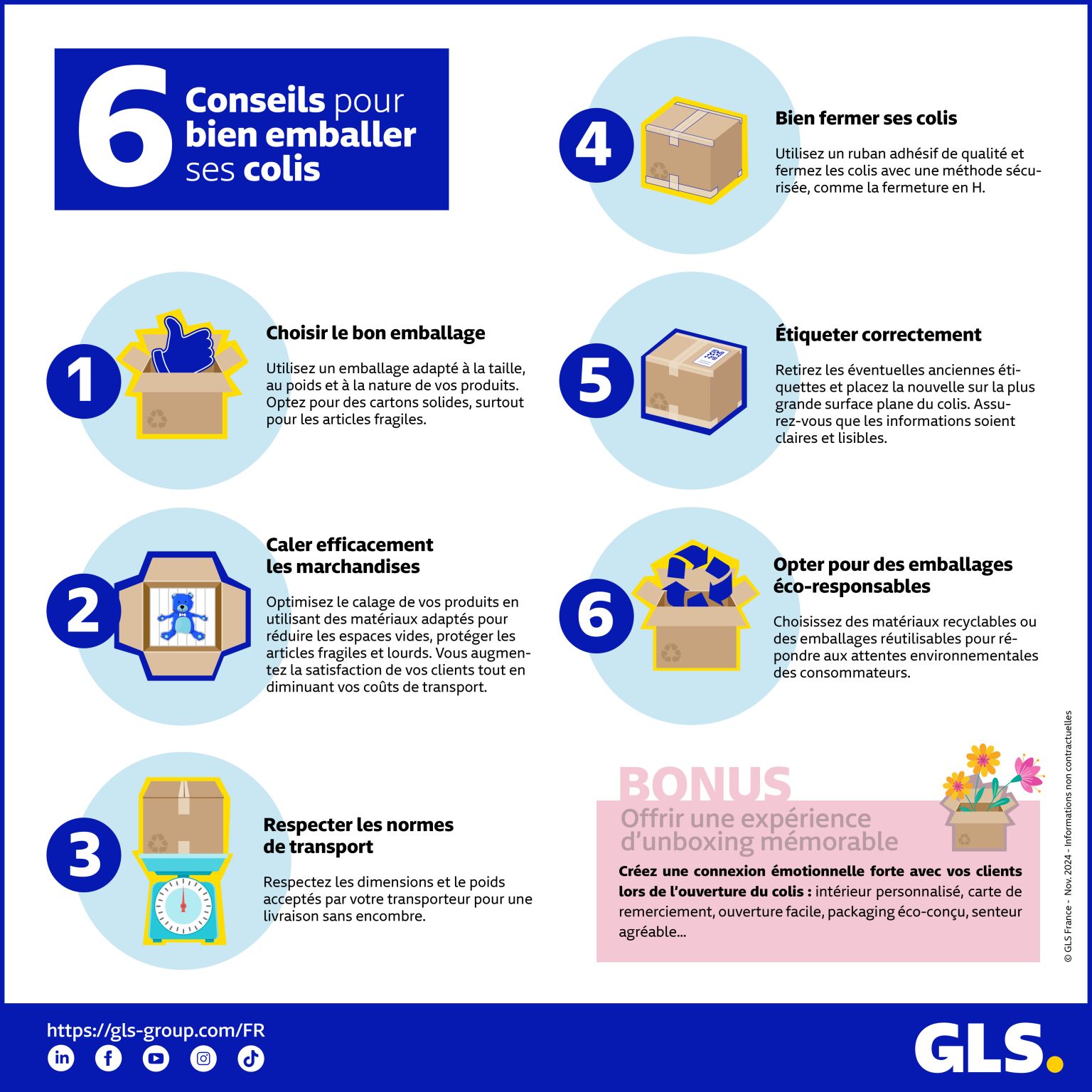Shipping Information
For a safe delivery of your parcels
Different transport routes and industrialised processes during shipment require parcel packaging that protects the goods from external influences. Sturdy cardboard, inner padding and strong tape all offer good protection. The right parcel packaging helps to safeguard the contents of your parcels during automatic sorting and transportation.
All that is then needed is the correct address on the dispatch label and the parcel is ready to send. You can easily generate parcel labels by using one of the GLS dispatch systems. According to the terms and conditions of GLS, a parcel may weigh up to 30 kg and its combined length and girth may be up to three metres.
Goods packed in cardboard boxes made of high-quality, moisture-resistant, double-wall cardboard are generally well protected. Corner, surface and edge protection are especially important. New boxes are best; used boxes are only suitable for resistant goods. The heavier the contents, the more stable the outer packaging needs to be.
Any empty spaces inside a box should be filled with padding. Goods should not be allowed to move around. The padding material used should be compatible with the goods being sent; precise-fit polystyrene moulds should be used for heavy and sensitive goods. No direct contact should be possible between goods and the outer parcel packaging.
When shipping glass bottles, please use specially designed parcel packaging.
The parcel packaging should be wrapped with adhesive tape and well-sealed on all sides. The heavier or larger the parcel, the stronger the adhesive tape needs to be. Robust sealing is essential for secure transport.
You can easily create parcel labels using one of GLS's dispatch systems Uni-Box, Uni-Connect (Winexpé) or Your GLS. The right system depends on your parcel volume. With the password-protected web-portal Your GLS, for example, you can generate, edit and print labels online.
The correct address, name and further personal information of the recipients can avoid delivery delays or misunderstandings. The label should be attached to the largest side of the parcel. If you prefer to re-use cartons, parcels or boxes, ensure that any stickers or other markings are removed.
Parcels should not be bundled together but instead sent individually. Each parcel should have its own label.
Embargos and sanctions With GLS, you can send your goods across Europe and all over the world. Please consider that the shipment of some goods or parcels is prohibited in the context of sanctions laws – for example because of their contents, their intended recipient or the country to or from which they are to be sent.

Packing material provides the best protection when it is suited to the item weight and type. Choosing the right material for parcel packaging is therefore crucial. In order to be able to offer high quality services at a fair price, GLS consolidates parcels for transportation. During transshipment, automatic conveyor systems are used for sorting. Good parcel packaging is able to absorb knocks and vibrations, ensuring that parcels reach their destination safe and sound.
But it’s not just the material for parcel packaging that counts. The transport conditions too need to be taken into account. These include: The parcel may weigh up to 30 kg, and the combined length and girth may measure up to three metres. Bundled parcels can be loosened by vibrations during transport. For this reason, the parcel packaging should always comply with the shipping terms.